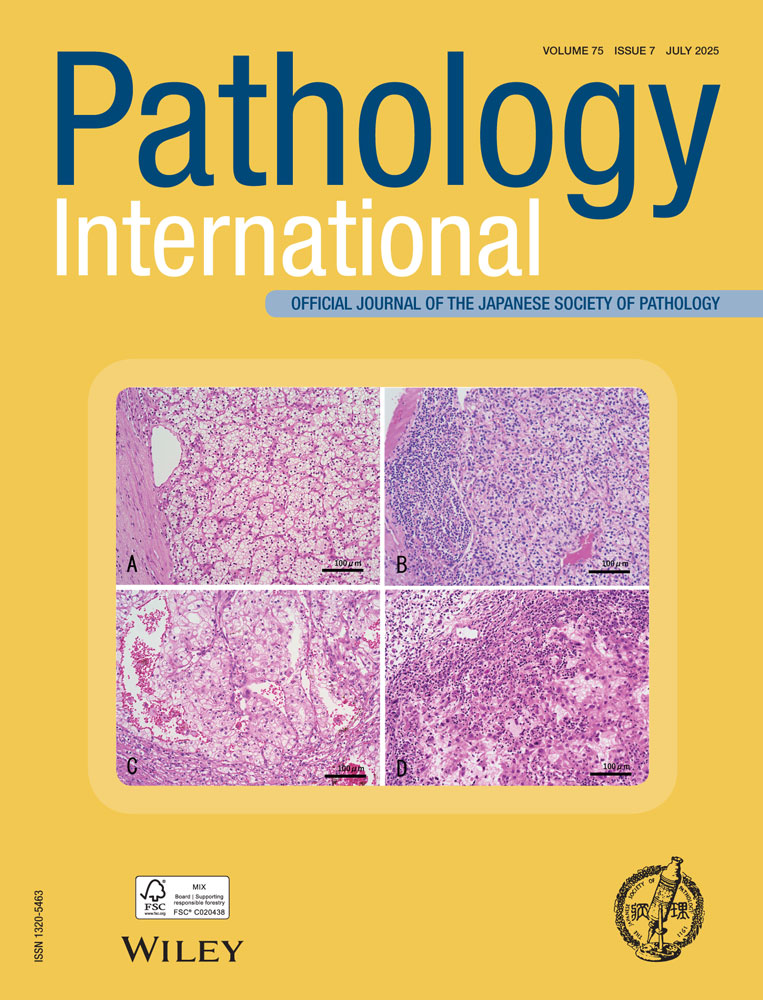Assessment of DNA content in formalin-fixed, paraffin-embedded tissue of lung cancer by laser scanning cytometer
Abstract
A new cytometric device, a laser scanning cytometer was developed to overcome the limitations of flow cytometry (FCM) and image analyses. The purpose of this study was to develop a method that allows laser scanning cytometry (LSC) to be used for measuring the cellular DNA content of paraffin-embedded tissues. Paraffin-embedded lung cancer tissue from 30 patients was analyzed by both FCM (p-FCM) and LSC (p-LSC). In addition, touch preparations from fresh frozen tissues were prepared to provide material for LSC (f-LSC). The limits of agreement for the DNA indices (DI) measured by p-LSC and p-FCM were –0.07 to 0.07, indicating that for a given case, these methods would be expected to differ by no more than 0.07. The limits of agreement for comparisons between the other materials and methods were wider and depended upon the size of the measurements. Agreement between f-LSC and p-FCM was good for small DI values, but poor for large values. Agreement between f-LSC and p-LSC was poor for small and large DI values, but good for moderately sized values. Discordancies in DNA ploidy status between different materials and methods may have been caused by either the heterogeneity within tumors, sampling errors or differences in the interpretation of histograms. This method allows a comparison of the results of DNA analysis with histologic findings from hematoxylineosin-stained sections and the prognosis of the patients.




